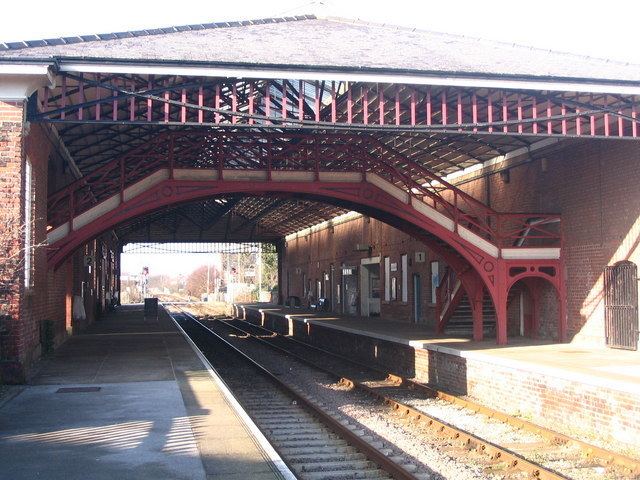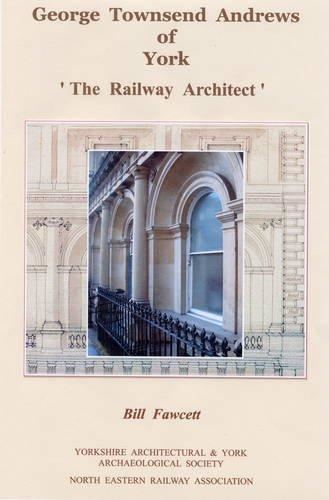Name George Andrews Role Architect | Died 1855 | |
 | ||
Structures White Hart Hotel, Harrogate | ||
George Townsend Andrews (1804–29 December 1855) was an English architect born in Exeter. He is noted for his buildings designed for George Hudson's railways, especially the York and North Midland Railway. Andrews' architect's practice in York did not confine itself to railway work, its other buildings including headquarters for two York-based banks and a number of churches.
Contents
- Life
- Railway work
- Stations
- YNM Main Line 1839
- GNER Main Line 1839
- York to Scarborough YNM 1845
- Rillington Junction to Whitby YNM 1845 7
- Seamer to Hull YNM 1846 7
- York to Market Weighton YNM 1847
- Non railway work
- References

Life
Andrews' roots lay in Jamaica and in London, but from the 1820s he was mainly in York.
He won a Society of Arts premium in 1824.He was a council member of the Yorkshire Architectural Society,and Sheriff of York in 1846-47, during George Hudson's third term as mayor.
He died in York on 29 December 1855.
Railway work
Andrews designed all the buildings, not only the stations, for the York and North Midland Railway {Y&NM} from the middle of 1839 until the work dried up in 1849 following the downfall of George Hudson. Having designed the new York station jointly for the Y&NM and the Great North of England Railway (GNER), he went on to design buildings for the GNER as far north as Northallerton. He designed all the buildings for the Newcastle and Darlington Junction Railway and the Yorkshire buildings of the York, Newcastle and Berwick Railway.
The Y&NM opened its first section from a temporary station outside the walls of York in May 1839 but Hudson wanted to bring the railway into the heart of York, which meant breaching the city walls. Andrews provided the favoured design for the requisite entry in the form of a Tudor arch. The new station was laid out to a plan by Robert Stephenson, which was a development of his plan for Euston station making allowances for York's status as a junction. Andrews designed the station buildings. They comprised two separate trainsheds, joined at each end, producing a hipped appearance, which became one of Andrew's trademarks. Each shed was (like Euston) of 40 ft span and the roof was supported by wrought iron "Euston trusses", giving a more slender airy construction than contemporary wooden station roofs. The train sheds were clad with slate on wooden planking, with the portion nearest the apex being glazed. The main station facilities were ranged along the departure platform with a central booking office flanked by the waiting rooms for each class (and a separate waiting room for ladies); provision was also made for parcels traffic, left luggage, the station master and the maintenance of lamps. On the first floor was the Y&NM boardroom and offices. Adjacent to the arrivals platform were 1st and 2nd class refreshment rooms and a bar with bedrooms above.
Due to delays in agreeing the building design with the GNER the station was incomplete when services started running to London. It finally opened on 4 January 1841.
The station at York embodied many of the features Andrews was to use in his other medium and large stations for the Y&NM, in particular the hipped roof supported by "Euston trusses" but in later examples, the glazed portion of the roof was raised and given louvered sides to let smoke and steam out. Locomotives were not originally expected to enter York station but later that roof too was modified. Other features characteristic of Andrew's buildings include marked overhanging eaves and chimney stacks with an arch over the apex of the roof.
Stations
Stations with an overall roof are denoted thus: Station Name
